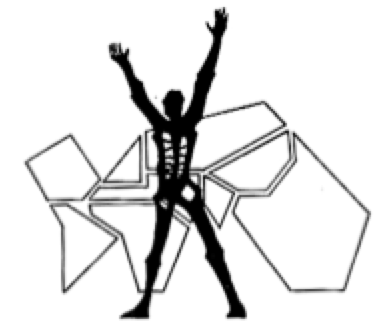Mastery III
Presentations, Tools of the Trade, Measuring Your Mastery
MASTERING PRESENTATIONS, TOOLS OF THE TRADE, MEASURING YOUR MASTERY
MASTERING PRESENTATIONS
The dreaded “Death by PowerPoint” has become a standard in many industries, something ICA facilitators and trainers find quite disturbing. It goes against all of the principles of imaginal education (see also the Imaginal Education Collection). Lecture Building is a good way to create presentation content that will engage your audience. Images rather than lots of text in a PowerPoint will help maintain interest and particularly engage visual learners.
Lecture Building
The original work of the Ecumenical Institute in its enormous efforts at “renewing the church” included mastering pedagogy for the delivery of content in courses. A unique approach developed called the 4x4x4 (or sometimes just the 4×4). After selecting a topic and clarifying the rational and experiential aims (originally called objectives), the lecture giver would brainstorm ideas using an 8 x 8 grid, meaning 64 boxes to be filled with ideas. Once they had such an exhaustive list of potential to include, they would use the Lecture Building Worksheet (see below) to rationally organize the flow of the content, making sure it also was meeting the aims. Each of the links below gives different perspectives and further information on how to develop an effective presentation that engages your own heart as well as engaging the audience.
Giving a Dramatic Lecture extensive talk, no date
Lecture Building from The Academy papers, Chicago Centrum, 1974
Lecture Building – Presentation Notes Example a fascinating hand-written set of notes of one person’s work in creating a lecture.
Lecture Building Brainstorm Chart 8 x 8 as 64 Blocks (blank)
Off the top of your head list Illustrations/Images/Stories related to the subject matter of your talk. This chart pushes you to think “outside the box” if you brainstorm something for all 64 blocks.
Lecture Building Worksheet
Once you have brainstormed at least 64 potential pieces of content, use the chart below to begin to rationally organize the flow of the content. See the Lecture Building links above for instructions and examples.

Sample Climate Change Presentation
Below are the links to create an entire scientifically sound presentation on the climate change crisis and engage the group in what they can do about it, thanks to ICA colleague and facilitator, Linda Hamilton
Instructions for Preparing your Presentation
Introductory Remarks – What’s Happening and Why
“Teeth of Facilitation“, Jim Troxel, 1995
MASTERING TOOLS OF THE TRADE
Sticky Walls
To obtain a ToP Sticky Wall®. Facilitator Tool Kit or other facilitation supplies, go to the Institute of Cultural Affairs on-line ICA Store.





To see a video on how to use a ToP Sticky Wall and how to care for a sticky wall, go to All things”sticky wall” a demonstration…. With thanks to Barbara MacKay and North Star Facilitators.
Table Toys



Colorful and interesting/amusing objects or “manipulatives” were first
placed on training tables by an early trainer of ICA methods.
Now they are now widely used by ToP trainers and
facilitators to balance the intuitive and rational
parts of the participants’ brains. Museums,
art and unique toy stores are frequently
the source of toys and objects.


MEASURING YOUR MASTERY
Beyond the strong feedback you receive from your assessors in a certification program, keeping a journal of reflections on your sessions that captures what happened as opposed to what you planned and adds what you learned from the experience will allow you to go back and remember what you learned as you design for later sessions. You can also use the journal to track the progress of your professional development journey.
As you continue to use your skill-set and design further sessions, an ability to do different things with the methods is another measure of your mastery. Below is an example of using methods and experience to create an entirely different application.
Storytelling Procedures from Swamp Gravy Program, Bill Grow, 1998
